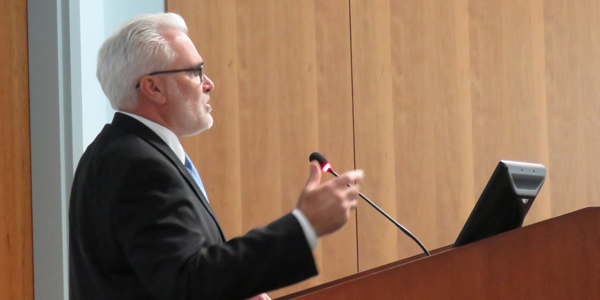By Jason Fordney
FOLSOM, Calif. — CAISO has launched what will be a years-long initiative to develop a program to pay storage resources to absorb excess renewable generation from the grid and make the energy available later, creating a new profit stream strongly desired by energy storage companies.
Storage companies such as Tesla have been urging CAISO to develop the new product as way to incentivize clean energy and reduce solar curtailments. During certain times of day, large solar surpluses on the ISO’s system can sometimes produce negative wholesale electricity prices and require curtailing output that could be stored and used at other times.
The load-shifting product will be the focus of the third phase of the ISO’s Energy Storage and Distributed Energy Resources (ESDER) program. CAISO changed the focus of the initiative to a behind-the-meter load-shifting product rather than the excess load-consumption product that had previously been discussed.
CAISO Manager of Infrastructure and Regulatory Policy John Goodin warned about a potential inherent flaw in developing an excess load consumption product.
“You can set up an incentive to where it is profitable just to waste energy,” Goodin said during a briefing of the ISO’s Board of Governors.
A load-consumption product could incentivize buyers to waste energy when a wholesale negative payment is higher than the retail payment. The purpose of the load-shifting product, however, is to incentivize productive use of excess renewable generation, Goodin said.
“That is good for the economy, it is good for the environment and seems like sound public policy,” he said, adding that the storage community supports the load-shifting concept. Load-shifting resources — such as a battery — could consume load when prices are negative, and the stored energy could be released behind the meter for demand management or sent to the ISO system, among other possibilities, he said.
The board last month approved a set of market rule changes that comprised phase two of the ESDER initiative, developed during a year-long process. (See New CAISO Rules Spell Increased DER Role.) That package will be sent to FERC for approval.
During the ESDER 2 initiative, Tesla and other storage companies urged CAISO to develop a new distributed energy resource product that would pay storage for absorbing excess solar generation, but the ISO declined at the time, saying more information was needed. (See Storage Advocates Urge CAISO on DR Product.)
To consider the specifics of the new product, the ISO has held four meetings with storage stakeholders, including the California Energy Storage Alliance (CESA), Stem, Tesla and Green Charge. Stakeholders are finalizing the desired features of the product, and the ISO will establish working groups to fill in the details. CAISO is identifying gaps in its Tariff and current resource modeling capabilities to aid in the effort. Implementation is targeted for 2019.
CESA Director of Policy and Regulatory Affairs Alex Morris told the board that CAISO staff have over the past month worked diligently with the storage community on the proposal. “From our point of view, this is going to provide very helpful service to the CAISO, while also beneficially shifting loads,” Morris said, adding that he is hoping for rapid implementation.
“There really should be a special urgency to this product because there currently isn’t a market participation pathway for that type of behind-the-meter resource,” Morris said.
The board asked a few questions about the new product, such as how pricing would work, but did not take any votes as the proposal is in its early stages. The initiative would also require a round of comment and approval by FERC after an extensive stakeholder process that will include participation by the California Public Utilities Commission.





